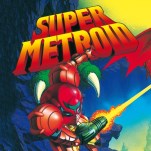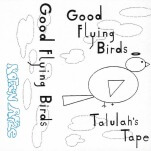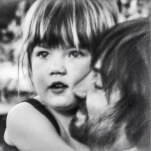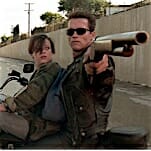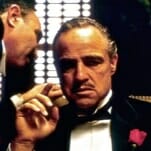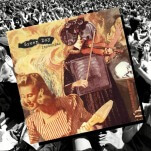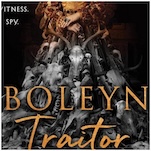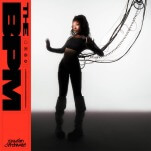Revenge is never simple—neither is the legacy of Kill Bill
Like The Bride herself, Kill Bill remains a messy, contradictory, thoroughly kickass duology.
Photo: Miramax Films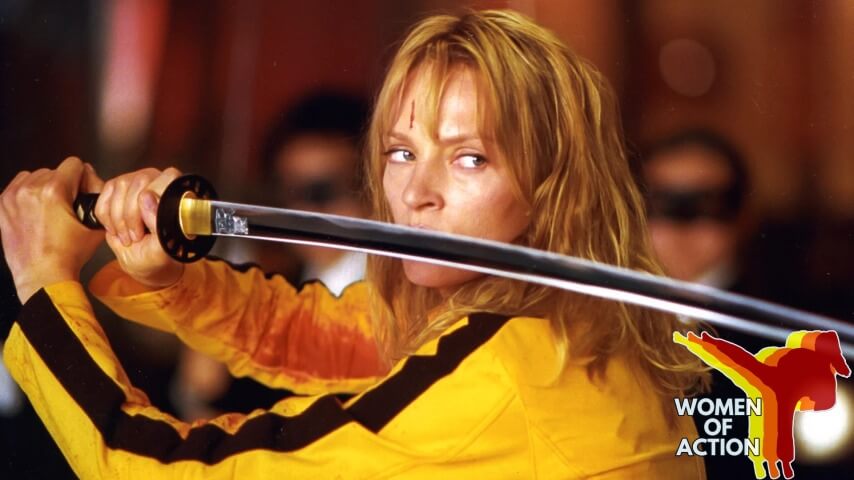
With Women Of Action, Caroline Siede digs into the history of women-driven action movies to explore what these stories say about gender and how depictions of female action heroes have evolved over time.
When I launched a column about women-led action movies, I knew I’d tackle Quentin Tarantino eventually. But I didn’t expect he’d come up so much in my research for other films. Michelle Yeoh credits him with saving her action career after a brutal injury on The Stunt Woman left her contemplating walking away from the genre altogether—he literally visited her in the hospital in Hong Kong to tell her how much her work meant to him. And at a time when the legendary Pam Grier was struggling to even get supporting roles, Tarantino used his Pulp Fiction clout to cast her as the titular hero of his third film, Jackie Brown—her first lead role in 22 years.
When it comes to female action stars, Tarantino’s fandom seems quite sincere. And that’s one more piece of the puzzle when it comes to grappling with a director whose work I generally enjoy, but who I also remain skeptical of. When you’re a female film buff, you make your peace with the fact that there are some male directors you can trust to craft compelling female characters (Ryan Coogler, Pedro Almodóvar) and others who just aren’t hugely interested in the interior lives of women (Christopher Nolan, Martin Scorsese). But the trickiest category to wrestle with are the male filmmakers who showily proclaim their love for strong female characters but don’t always back it up in their work—writer-directors like James Cameron, Joss Whedon, and Tarantino.
When Nolan writes another dead wife movie, it’s not particularly shocking. But when the man who gave us The Terminator gives us True Lies or the man who gave us Black Widow in The Avengers gives us Black Widow in Avengers: Age Of Ultron, it’s a betrayal. (That’s not even getting into the lengthy workplace abuse allegations against Whedon, which is a separate, but not entirely unrelated, issue.) Tarantino is one of those filmmakers where you can never quite tell whether he’s going to deliver one of his patented spitfire heroines or turn domestic abuse into a punchline.
Given all that, maybe it’s fitting that Tarantino’s most iconic female character—Uma Thurman’s Beatrix “The Bride” Kiddo—comes from a film steeped in the history of 1970s exploitation cinema; the revenge thrillers, martial arts imports, Blaxploitation flicks, women-in-prison films, and spaghetti Westerns that were filmed and released on the cheap as the traditional Hollywood studio system began to crumble. Tarantino wanted to do for ’70s grindhouse cinema what Raiders Of The Lost Ark did for movie serials of the 1930s and ’40s. As with the films of Grier and her contemporaries, that means both empowerment and fetishization are in the mix.
That tension could also be because Kill Bill was very much a joint venture between Tarantino and Thurman. They dreamed up the project together during Pulp Fiction, while the cast and crew were out for drinks. Over a game of miniature shuffleboard, they started spitballing ideas about a pregnant female assassin who gets attacked at her wedding, loses her baby, and goes on a revenge quest. Tarantino was so excited by the concept, he went home and wrote nine pages of the script that night. (The film ends with the credit “Based on the character of ‘The Bride,’ created by Q & U.”)
It would be nearly a decade before the film actually came together, however, after Thurman and Tarantino ran into each other at a party and she asked whatever happened to those pages. The time off fundamentally changed the nature of the project. “If I had written it [during Pulp Fiction], I probably would have based it on the Uma of that time: a 22-year-old girl,” Tarantino told IGN. Instead, he spent a year and a half working on the script while getting to re-know Thurman as a thirtysomething mother. He’d write pages, she would read them, and they’d talk through the story together—all while he took more and more inspiration from her life as a mom. By the time Tarantino actually finished the script, Thurman was pregnant with her second kid, and Tarantino pushed back production to wait for her. As he put it, “Would Sergio Leone have replaced Eastwood in A Fistful Of Dollars? Would von Sternberg have replaced Dietrich in Morocco? I knew how good she was going to be in this movie, so we waited.”
Though Kill Bill is often credited as a trailblazing film for female action heroes, that’s really only half true. During the ’80s and ’90s, Ripley and Sarah Connor had proven that women could open action blockbusters. And by the time the first Kill Bill movie premiered in 2003, we were well into a wave of late ’90s/early aughts “girl power” projects. TV shows like Xena: Warrior Princess, Buffy The Vampire Slayer, and The Powerpuff Girls paved the way for movies like Mulan, Charlie’s Angels, Miss Congeniality, and Lara Croft: Tomb Raider.
But what Tarantino did do was bring grit and bloodshed back to the female-led action genre, with an R-rated film that decidedly wasn’t for the whole family. The Bride is far gnarlier than your average blockbuster heroine—slicing off people’s limbs, ripping out their eyeballs, and even (unintentionally) killing a mother in front of her child. While films like Resident Evil and Underworld were moving in that direction in a campier way, Tarantino’s auteur bona fides gave Kill Bill a prestige sheen.
The sheer amount of kickass women contained in one movie also felt like a novelty at the time. In terms of iconography alone, it’s no small feat for an action film to deliver five instantly recognizable Halloween costumes for women—including not just The Bride with her yellow Bruce Lee tracksuit and samurai sword, but also Vivica A. Fox’s Vernita Green, Daryl Hannah’s Elle Driver, Chiaki Kuriyama’s Gogo Yubari, and Lucy Liu’s O-Ren Ishii. It’s also no small feat that each of their respective showdowns with The Bride is in contention for the best fight scene in the saga. (Personally, the Vernita and Elle fights are my favorites.)
But by far the most compelling thing about Kill Bill is the code that The Bride and her fellow Deadly Viper Assassination Squad members operate under. In a cinematic landscape where female action heroes tend to be scrappy survivors or sexy double agents, Bill’s vipers offer something nobler. Beatrix brutally attacks Vernita in her own home, but instinctively agrees to shield Verinta’s daughter from the violence. Elle loathes Beatrix, yet remains adamant that she deserves a heroic death. O-Ren apologizes when she realizes she’s underestimated her foe. And, perhaps most moving of all, Beatrix tells Vernita’s daughter that she’ll understand if she one day grows up and seeks vengeance against her too. For all its overt homages to other films, giving these female assassins the moral code of a samurai or swashbuckler is a truly original twist for American action cinema.
-

-

-

-

- Curated Home Page Articles By Test Admin October 21, 2025 | 3:10pm
-

- Curated Home Page Articles By Test Admin October 21, 2025 | 2:57pm
- Urls By Test Admin October 21, 2025 | 2:57pm
- Curated Home Page Articles By Test Admin October 21, 2025 | 2:55pm
-

-

-

-

-

-

-

-

-

-

-

-

-

-

-

-

-

-

-

-

-

-

-

-

-

-

-

-

-

-

-






